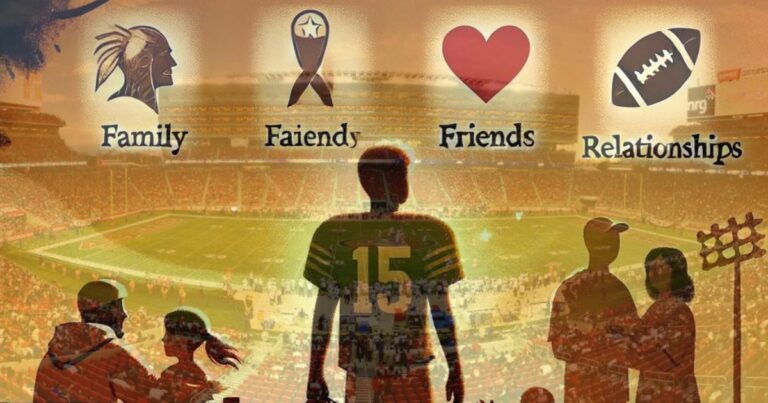
Winning a MotoGP championship is a dream for many riders, but being a champion comes with more than just trophies, fame, and sponsorships. Beneath the excitement and glory lie several hidden costs, both financial and personal. From the physical demands and mental stress to the high costs of equipment and training, MotoGP champions make great sacrifices to reach the top. This article explores the hidden costs of being a MotoGP champion and the price they pay for their success.
1. The Financial Burden
High Cost of Training and Equipment
MotoGP riders are some of the most skilled athletes in the world, but achieving that level of skill requires extensive training. Unlike many sports where the costs are low, training in MotoGP can be extremely expensive. Riders need access to racing tracks, which are often rented by the hour, and they also need professional coaches. These coaches help improve a rider’s technique, fitness, and mental strength. Hiring high-quality trainers can be very costly.
On top of training costs, MotoGP riders need specialized equipment. While teams often provide the bikes, riders usually have to pay for their own protective gear, which includes helmets, gloves, boots, and leather suits. These items are customized and designed to provide maximum safety, but they can cost thousands of dollars. Furthermore, this equipment wears out quickly due to the intense demands of the sport, so replacements are needed regularly.
Travel Expenses
MotoGP is a global sport, with races held across Europe, Asia, the Americas, and Australia. Champions have to travel worldwide, often at their own expense. Even though teams cover some travel costs, champions frequently have to cover additional expenses for their support teams or personal trainers. This constant travel adds up, both financially and mentally, as riders spend most of the year away from home and family.
Sponsorship Pressure
Many MotoGP champions rely on sponsorships to help cover these expenses. However, sponsorship comes with its own costs. Sponsors expect riders to attend events, shoot advertisements, and promote brands on social media. While it can be lucrative, balancing racing with these sponsorship commitments can be exhausting and adds another layer of pressure to an already demanding career.
2. Physical Costs of Racing
Endurance and Physical Fitness
Racing at high speeds requires extreme physical fitness, especially because of the intense G-forces (gravitational forces) that riders experience while leaning through turns. MotoGP bikes can reach speeds over 350 km/h (217 mph), and handling such speed requires top fitness. Riders need strong cores, arms, and legs to maintain control over the bike and endure the forces involved in each turn. MotoGP champions train like elite athletes, spending hours in the gym, cycling, or swimming to build the endurance needed for races that last up to 45 minutes.
Injuries and Recovery
Injuries are a constant threat in MotoGP. Riders often fall or crash at high speeds, which can lead to broken bones, fractures, or even more severe injuries. Many champions have suffered major injuries throughout their careers. Even with the best protective gear, the sport is dangerous, and injuries are common. Every crash means time off the bike, medical expenses, and long recovery periods. For a MotoGP champion, sitting out a race due to injury can hurt their overall standing and lead to stress over potential career setbacks.
Long-Term Health Issues
The physical demands of MotoGP don’t just affect riders in the short term. Many former riders experience long-term health issues due to years of high-speed racing and injuries. These include chronic pain, arthritis, and mobility issues from repeated injuries. Champions often face physical limitations as they age, with some needing surgery or physical therapy well after their racing careers have ended.
3. Mental and Emotional Costs
Constant Pressure to Perform
Once a rider becomes a MotoGP champion, the expectations from fans, sponsors, and the media increase significantly. Every race becomes a high-stakes event where they are expected to perform at their best. This constant pressure can lead to intense stress and anxiety. If a champion fails to win or even make it to the podium, they face criticism from fans and the media, which adds to the emotional toll.
Dealing with Fear and Adrenaline
MotoGP is a dangerous sport, and even the most experienced champions feel fear when racing. Going over 200 mph with little protection other than a leather suit and helmet can be terrifying. Champions must manage this fear while staying focused on the race. Many riders describe the “adrenaline high” they experience during races, but living with such high adrenaline levels can take a toll on mental health. Riders often have to find ways to calm their nerves and manage stress when they’re off the bike.
Loneliness and Isolation
MotoGP riders spend much of their time traveling from one country to another, away from family and friends. While they have a team around them, the constant travel and focus on training and racing can lead to feelings of isolation. Many champions report feeling lonely, especially since they rarely get to spend time with family. The demanding schedule of a MotoGP season leaves little time for a social life, and maintaining relationships can be challenging.
Balancing Career and Family
Being a MotoGP champion requires total commitment to the sport, often at the expense of family life. With a racing schedule that spans nearly the entire year, champions have limited time to spend with their loved ones. The intense focus on training and racing makes it hard to maintain close relationships, which can strain marriages and family life. For riders with children, missing out on important family moments can be especially tough.
4. The Cost of a Short Career
Early Retirement
MotoGP careers are often short, with many champions retiring in their mid-30s or even earlier. The physical demands and risks involved in the sport mean that riders face a limited window to compete at the highest level. Retirement is often necessary because of injuries, declining physical fitness, or simply the desire to avoid further risks. This early retirement can create financial pressure, as retired riders no longer earn the high salaries and sponsorship deals they enjoyed during their peak years.
Uncertain Future
While some champions transition to other roles within MotoGP or motorsport, such as coaching or commentary, these opportunities are limited. For others, finding a new career after retiring from racing can be challenging, especially since their entire lives have been focused on racing. Without a clear path after retirement, some former champions struggle to adjust to life outside the fast-paced world of MotoGP.
Financial Insecurity
Although MotoGP champions earn significant money during their careers, the high costs associated with the sport can mean that not all riders retire with substantial savings. Medical expenses, the costs of training, and maintaining a certain lifestyle can quickly drain their earnings. Unlike other sports with larger financial rewards, MotoGP doesn’t always provide enough for a lifetime, and champions may need to find ways to earn money after their racing days are over.
5. The Rewards That Make It Worthwhile
Despite the many hidden costs, being a MotoGP champion also brings incredible rewards. The thrill of racing, the respect and admiration of fans, and the sense of accomplishment from reaching the top of the sport make the sacrifices worthwhile for many riders. MotoGP champions experience things few people ever will, and the pride of representing their countries, teams, and sponsors is deeply rewarding.
Champions often say that the passion for racing and the love of the sport help them endure the difficulties they face. The rush of competing and the joy of winning make every hardship feel worthwhile. For many riders, the dream of becoming a MotoGP champion outweighs the physical, mental, and financial costs.
Final Thoughts
Being a MotoGP champion is more than just winning races and holding trophies. The path to becoming a champion is filled with hidden costs—financial burdens, physical strain, emotional stress, and personal sacrifices. Champions must dedicate their lives to training, endure intense pressure, and take risks that most people would avoid.
In the end, MotoGP champions are more than athletes—they are individuals who push themselves to their limits for the love of their sport. For fans, it’s important to understand and appreciate the sacrifices these champions make, as their achievements come at a high price. The hidden costs of being a MotoGP champion reveal a side of the sport that is often unseen, adding even more respect for the dedication and bravery it takes to reach the top.






